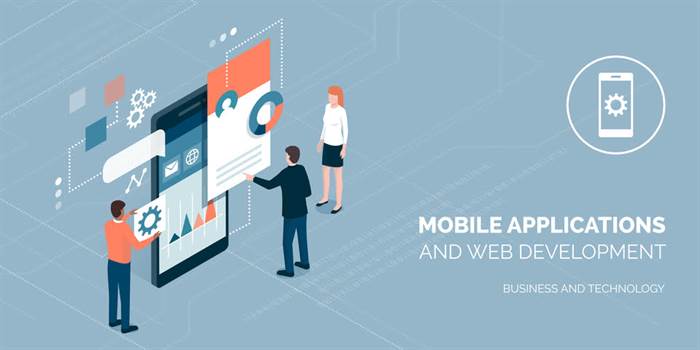A data mesh is a set of organizational ideas that emphasize decentralized groups, federated governance, treating information like a product, and enabling self-service access to data. A information mesh is a decentralized knowledge architecture that organizes data by a specific enterprise domain—for instance, marketing, sales, customer support and more—to provide extra ownership to the producers of a given knowledge set. So it’s important that the info platform group and knowledge area teams work carefully collectively to create a toolset that works for all stakeholders. The enablement staff assists area teams in making the shift to knowledge as a product by defining modeling best practices, designing reference examples, and coaching customers on instruments and processes.
However, for a given enterprise problem the information domains are sometimes greatest aligned to the scope of the issue being solved, the context of a selected enterprise course of, or the household of functions in a specific drawback area. In massive organizations, these knowledge domains normally reduce across the internal organizations and expertise footprints. Data mesh introduces organizational and process modifications that firms will need to manage knowledge as a tangible capital asset of the enterprise.

To make analytical information product development accessible to generalists, the self-serve platform ought to help any area information product developer. The information governance group, which itself is comprised of area experts, work with the enablement and knowledge area teams to coach everybody on information governance best practices, together with the domain teams’ new obligations as data homeowners. Additionally, promoting a culture change in the path of a extra collaborative, domain-driven strategy is crucial.
Stay Webinar → Knowledge Groups All Over The World Use Atlan To Convey Their Information To Life
As such, the area owner is now providing knowledge as an asset to the the rest of the group. So, just like with product thinking, data-as-a-product ought to present a delightful expertise to the info data fabric vs mesh scientists who need to find and use this knowledge. Zhamak Dehghani, the progenitor of the info mesh architecture, laid out the four principles of information mesh throughout her time at Thoughtworks.
Observability and Monitoring Tools are indispensable elements in modern data ecosystems, providing organizations the ability to realize insights into the performance, reliability, and well being of their methods. Metadata management methods are essential for sustaining a complete metadata repository in a Data Mesh environment. Maintaining high requirements of information quality in a decentralized setting like Data Mesh can be difficult. These teams might be responsible for the creation, maintenance, and high quality of their information. Clear communication and documentation are key to ensuring that each area understands its position and responsibilities in the Data Mesh framework.

Instead of reinventing Zhamak’s very thoughtfully built wheel, we’ll boil down the definition of an information mesh to a few key ideas and spotlight the means it differs from traditional knowledge architectures. Its adoption was additional spurred by the COVID-19 pandemic in an effort to drive cultural change and scale back organizational complexity around information. Both manage big quantities of knowledge, however information mesh is decentralized, and data material is centrally controlled. To set up such a federated mannequin, the info product owners must kind a committee — for example, a knowledge governance committee or council.
Process: Adjustments Within The Organization
In this instance, we’ll think about a monetary services firm that gives numerous products and services, including banking, lending, investment management, and insurance coverage. The firm faces data management challenges due to the rising quantity of data, complicated data processing needs, and the requirement to meet regulatory compliance. In different words, Data Mesh is a decentralized and domain-oriented strategy to information architecture, primarily focused on knowledge productization and autonomy. These questions are not only a matter of “implementation details” they’re centrally necessary to the info architecture itself. A domain-driven design for static data will use completely different techniques and instruments than a dynamic, information in movement means of the same design. For instance, in dynamic data architectures, the data ledger is the central source of fact for information events.
- The core principle is that data should be the responsibility of the enterprise groups closest to the information.
- This contains information for clinical analysis, epidemiological research, and healthcare operations optimization.
- Use cases for data mesh embody both operational information and analytic information, which is one key difference from typical data lakes/lakehouses and information warehouses.
- A centralized knowledge integration layer consolidates data integration processes into one centralized infrastructure.
- It’s most likely finest to start out with a small project to create a set of information merchandise which are critical to completely different areas of the enterprise.
Such options were maintained by a small group of specialists and regularly burdened by important technical debt. Ask anybody within the information industry what’s scorching today and likelihood is “data mesh” will rise to the highest of the list. Learn about obstacles to AI adoptions, notably lack of AI governance and danger management solutions. Some enterprises have started to implement a data mesh, including Intuit, Netflix, Roche, Saxo Bank, Vistaprint, Zalando and the united states Making such choices without encroaching on the autonomy or independence of a domain is crucial for a federated mannequin to be effective. Rather than having data oceans, a data mesh introduces smaller knowledge ponds, with canals between them.
Operate A Decentralized Information Architecture
Moreover, very similar to an individual microservice, each data domain should define and agree on SLAs and quality measures that they will “guarantee” to its shoppers. Much in the same way that software engineering groups transitioned from monolithic purposes to microservice architectures, the information mesh is, in some ways, the information platform model of microservices. Data mesh and knowledge cloth are two distinct approaches to managing data and making knowledge and insights accessible to enterprise groups and individual users who must work with that data for the profit of the organization.
Data mesh is aligned to these mesh ideas and offers a decentralized method of distributing information throughout virtual/physical networks and across huge distances. Legacy knowledge integration monolithic architectures, corresponding to ETL and information federation tools—and even more lately, public cloud providers, such as AWS Glue—require a highly centralized infrastructure. Decentralized IT methods are a contemporary reality, and with the rise of SaaS functions and public cloud infrastructure (IaaS), the decentralization of functions and data is right here to stay. Application software program architectures are shifting away from the centralized monoliths of the previous to distributed microservices (a service mesh).
A sizzling topic in enterprise software, information mesh is a brand new approach to excited about data primarily based on a distributed architecture for data administration. The idea is to make knowledge more accessible and out there to business users by instantly connecting knowledge house owners, information producers, and data consumers. Data mesh goals to improve business outcomes of data-centric solutions as nicely as drive adoption of contemporary data architectures. The implementation of Data Mesh promotes organizational agility for organizations who need to thrive in an uncertain economic local weather. All organizations want to have the flexibility to respond to modifications of their setting with a low-cost, high reward strategy.
Data architecture will observe the identical pattern toward decentralization, with data turning into extra distributed throughout a wider variety of physical websites and across many networks. The decentralized strategy behind information mesh aims to deal with knowledge as a product by creating a self-service data infrastructure to make data extra accessible to business users. To create high-value data merchandise, firms should tackle https://www.globalcloudteam.com/ tradition and mindset shifts and decide to a extra cross-functional approach to business area modeling. After generating connectivity throughout all the various information sets, the subsequent goal is to create an interface for enterprise and analytics teams to find their data. It’s called logical, as a outcome of we’re not shifting information into a repository the place data shoppers can access it.
This illustrates the separation of considerations, domains are concerned with information and the self-serve knowledge platform group is concerned with know-how. The measure of success of the self-serve data platform is the autonomy of the domains. To support domain-driven data, organizations ought to task a knowledge platform staff to create the necessary infrastructure that enables area teams to manage their own knowledge. Build an operational and analytical mesh across the whole knowledge property
Furthermore knowledge in the knowledge lake is not going to have been pre-processed, so data points will inevitably come up. The knowledge client will then usually should liaise with the information lake group to grasp and resolve information issues, which becomes a major bottleneck to utilizing the information to answer the initial business query. Teams handling a large amount of knowledge sources and a need to experiment with data (in different words, rework data at a speedy rate) can be clever to contemplate leveraging a knowledge mesh. In addition, the architecture ought to resolve any friction or disputes with different domains. As a result, it’s possible to mine huge quantities of data for insights in actual time and at scale. Organizations will work with multiple interoperable data lakes instead of having one data lake to rule them all.
This consists of setting appropriate access controls, imposing classification guidelines, establishing guidelines for knowledge quality, and configuring anomaly detection, amongst others. These principles are key because information mesh requires more than just re-architecting your data-driven functions. It also takes diligence to attain the proper steadiness between agility and efficient oversight.
Putting all these data management capabilities to work right into a unified architecture will impact each knowledge client. A knowledge mesh will assist improve your world systems of report and systems of engagement to operate reliably in actual time, aligning that real-time knowledge to line-of-business managers, knowledge scientists, and your customers. It additionally simplifies data administration on your next-generation microservice functions.



